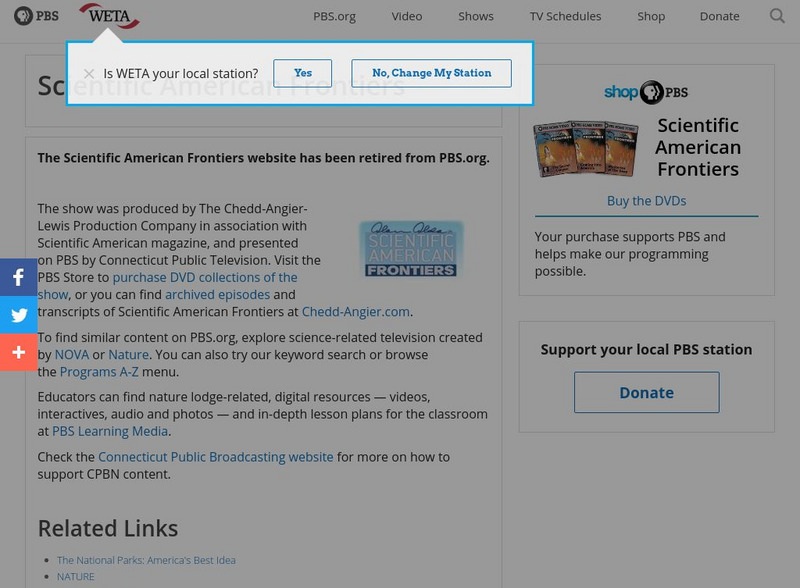Hi, what do you want to do?
Smithsonian Institution
National Museum of Natural History: American Mammals: Little Brown Bat
Echolocation of little brown bats has been well studied since the invention of bat detectors, electronic devices that can "hear" the ultrasonic calls bats make, which are usually beyond the range of human hearing. Little brown bats...
PBS
Pbs Teachers:borneo: A Batty Mapping Method
Explore how bats use echolocation to find prey by using echoes to map the direction and distance to various echo sources in their surroundings. Determine the minimum distance at which an echo can be heard and the distance to an echo source.
TeachEngineering
Teach Engineering: How Does an Ultrasonic Sensor Work?
Students learn how ultrasonic sensors work, reinforcing the connection between this sensor and how humans, bats, and dolphins estimate distance.
PBS
Pbs Teachers: Scientific American: Expedition Panama: Echoes in the Night
Explore your prior knowledge about bats and investigate bats' use of echolocation to identify and catch prey. Design a game like "Marco Polo" to demonstrate echolocation.
Curated OER
New York Times: Bats on Parade
A series of eight slides shows us photos of bats and shares interesting information about bats' diets and ability to echolocate, the evolution of bats, and the variety within the species.
BBC
Bbc Nature: Megabats
Megabats are one of the two types of bats, the others being the insect-eating bats. The megabats are fruit bats, and most species cannot echolocate. Learn more about megabats in this well-constructed overview produced by the BBC. This...
PBS
Pbs Kids: Cyberchase: Echo Explorers
Players explore math concepts and must use echolocation, as well as their skills in mapping and coordinates, to help free the bats trapped in dark caves.











